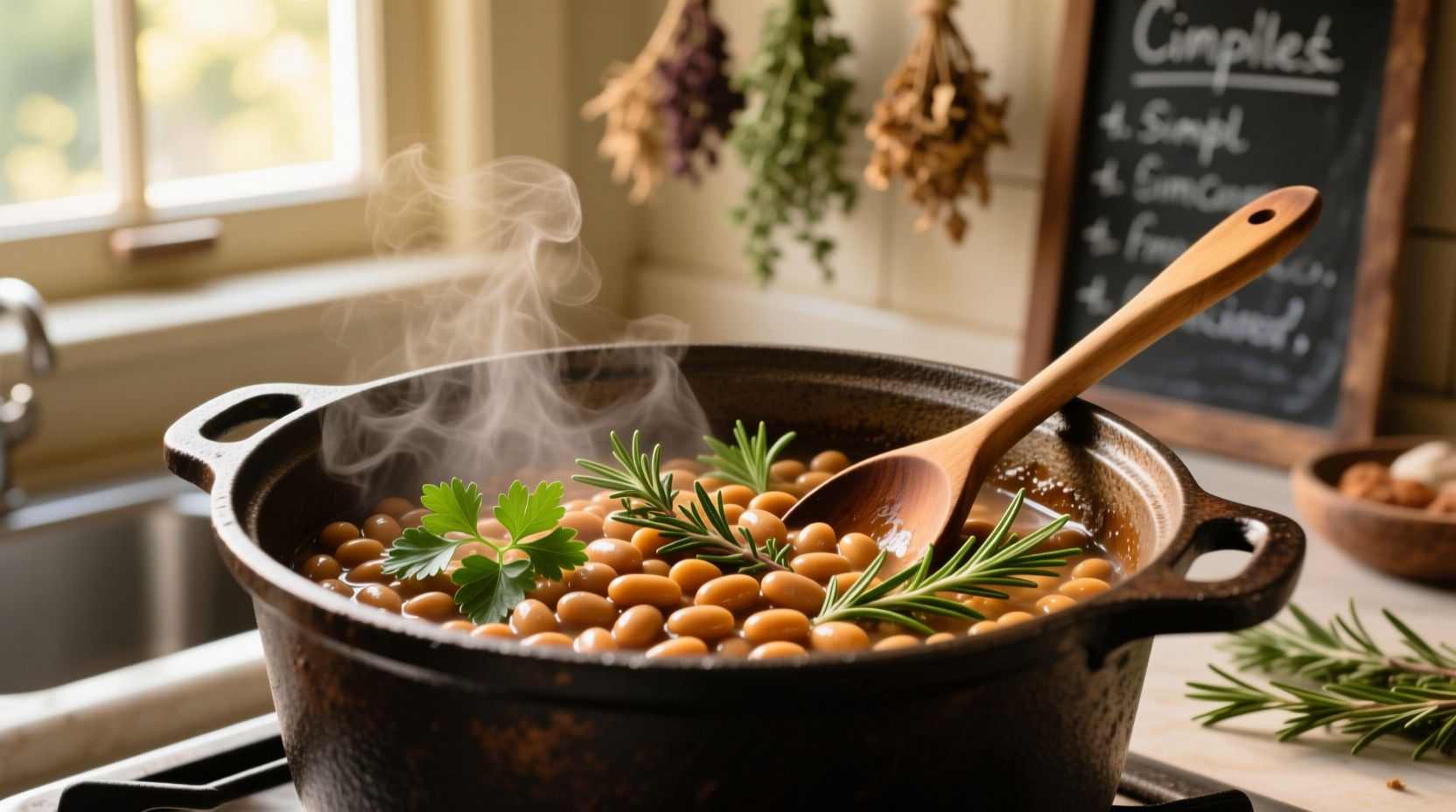Nothing beats the creamy texture and rich flavor of properly cooked dried beans. Whether you're making black beans for tacos, chickpeas for hummus, or cannellini for soup, mastering bean preparation unlocks nutritional benefits while avoiding common pitfalls like tough beans or digestive discomfort. This guide reveals professional techniques that guarantee perfect results every time.
Understanding Bean Types and Their Cooking Needs
Not all beans cook the same. Understanding your bean's characteristics prevents undercooked or mushy results. Different varieties have unique cooking requirements based on size, density, and natural compounds.
| Bean Type | Soaking Time | Cooking Time | Special Considerations |
|---|---|---|---|
| Black Beans | 8-12 hours | 45-60 minutes | Add salt after softening begins |
| Chickpeas | 12+ hours | 60-90 minutes | Requires longer soak for creaminess |
| Lentils | None | 20-30 minutes | Don't require soaking |
| Kidney Beans | 8 hours | 50-75 minutes | Must boil 10 minutes first to destroy lectins |
According to the USDA Food Safety and Inspection Service, kidney beans contain phytohaemagglutinin, a natural toxin that requires boiling for at least 10 minutes to become safe for consumption. Never skip this critical step with kidney beans.
Step-by-Step Bean Preparation Process
1. Sorting and Rinsing (5 Minutes)
Spread beans on a clean surface and remove any debris, shriveled beans, or small stones. Rinse thoroughly in a colander under cold running water. This simple step prevents unpleasant surprises and removes surface dust.
2. Soaking Methods Compared
Soaking reduces cooking time and improves digestibility by breaking down complex sugars that cause gas. Choose the method that fits your schedule:
- Overnight Soak: Cover sorted beans with 3 inches of cold water and let stand 8-12 hours. Drain and rinse before cooking.
- Quick-Soak Method: Cover beans with water, bring to boil for 2-3 minutes, then remove from heat, cover, and let stand 1 hour. Drain and rinse.
Research from the Oregon State University Extension Service shows that proper soaking can reduce cooking time by up to 25% while improving nutrient availability. The quick-soak method works well when time is limited, though overnight soaking generally yields slightly better texture.
3. Cooking Techniques for Perfect Results
After soaking, use fresh water for cooking (never the soaking water, which contains indigestible sugars). Follow these professional techniques:
Stovetop Method (Most Reliable)
- Place soaked beans in a large pot with fresh cold water (3 cups water per 1 cup beans)
- Bring to a gentle boil, then reduce to a steady simmer
- Cover partially and cook until tender (check every 15 minutes after 45 minutes)
- Add salt only when beans are almost tender (about 15-20 minutes before finish)
- Remove from heat and let sit in cooking liquid for 15 minutes before using

Pressure Cooker Method (Fastest)
For Instant Pot or similar: Use 1:2.5 bean-to-water ratio. Cook black beans at high pressure for 25 minutes with natural release for 15 minutes. Chickpeas require 35 minutes. No soaking needed with this method, though it improves texture.
Avoiding Common Bean Cooking Mistakes
Even experienced cooks make these errors that ruin bean texture and flavor:
- Adding salt too early: Salt inhibits softening. Wait until beans are partially cooked.
- Using hard water: Minerals in hard water prevent softening. Use filtered water if possible.
- Boiling too vigorously: Rapid boiling breaks skins. Maintain a gentle simmer.
- Adding acid too soon: Tomatoes, vinegar, or wine prevent softening. Add near the end.
A 2018 study published in Foods journal confirmed that adding sodium chloride (salt) during the soaking phase significantly increased cooking time compared to adding it during the cooking phase. The study recommended adding salt when beans are about 75% cooked for optimal results.
Enhancing Flavor While Preserving Texture
Professional chefs use these techniques to maximize flavor without compromising texture:
- Add aromatics like onion, garlic, and bay leaves to the cooking water
- Include a strip of kombu seaweed for improved digestibility and subtle umami
- Finish with a splash of vinegar or citrus juice to brighten flavors
- Reserve some cooking liquid to adjust consistency in finished dishes
For gas reduction, the University of Michigan Health System recommends gradually increasing bean consumption over several weeks to allow your digestive system to adapt. Starting with smaller portions of easier-to-digest beans like lentils before progressing to denser varieties helps minimize discomfort.
Storage and Reuse Guidelines
Proper storage maintains bean quality for future use:
- Cool completely in cooking liquid before refrigerating
- Store in airtight containers with enough liquid to cover (up to 5 days)
- Freeze in portion-sized containers with cooking liquid (up to 6 months)
- Thaw frozen beans in refrigerator overnight before use
Don't discard cooking liquid! This nutrient-rich "pot liquor" makes excellent soup base or can be reduced for sauces. The liquid contains valuable water-soluble nutrients that would otherwise be lost.
Troubleshooting Guide
| Problem | Causes | Solutions |
|---|---|---|
| Beans remain hard | Old beans, hard water, acid added too early | Use fresher beans, try baking soda (1/4 tsp per pound), ensure proper soaking |
| Beans are mushy | Overcooking, vigorous boiling, old beans | Check frequently near end of cooking, maintain gentle simmer |
| Excessive foam | Natural compounds released during cooking | Skim foam during first 10 minutes of cooking |
Remember that bean age significantly affects cooking time. Beans stored longer than 12 months may never soften properly regardless of technique. Purchase from stores with high turnover for best results.











 浙公网安备
33010002000092号
浙公网安备
33010002000092号 浙B2-20120091-4
浙B2-20120091-4